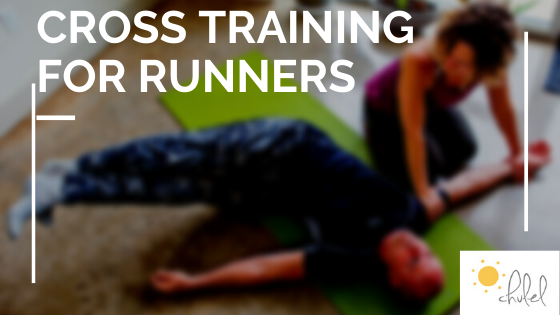Instead of the IT band, look at the TFL-The Tensor Fasciae Latae is just above the IT band. So you can foam roll the IT band all-the-day-long, but you may have a tight and weak TFL. The TFL is critical for proper loading of body weight over the standing leg during mid-stance in gait and it’s under chronic shortening because of sitting. Here's a way to release the TFL with a ball or foam roller, and here’s a way to strengthen it along with the gluteus medius and minimus which all work in tandem for that portion of gait. They’re critical muscles for balance, so keeping strength here will help you in that capacity as well.
Is the problem in your jaw, or your hips?-If the jaw is off, it can throw off this lateral hip stability that the adductors and abductors help with. These are some of the more specific relationships I look at individually in session, but if you know you tend to hold tension here, or that you have jaw issues such as TMJ, your hips as jaw could be in a dysfunctional relationship. Doing some self massage before attempting 👆may help you access the target muscles more easily.
Tight and Weak-In general, I find that most folks have tight and weak hip rotators with an underactive gluteus maximus. Here again, sitting is a major culprit, as these muscles just get lazy when a chair supports them all day and we hold our breath. You can release the piriformis with a tennis or lacrosse ball like so, and then follow that up with some glute strengthening with some hip bridges. I’ll record my favorite progression & post in the next week. You’d also want to get some strength back in those rotational muscles, so here’s my favorite series of exercises for that. Note, if you acutely have piriformis syndrome or lower back pain, I’d just start with some overall foam rolling the glutes like so and a gentle stretch such as this. If you attack the piriformis, I find that it has a hard bite back. Slow and steady is better and more effective in the long run.
Piriformis Syndrome- See notes 👆, but also want to add that the piriformis gets chatty, or ticked off, when weight is not being transferred down through the pelvis symmetrically. In other words, it can have a spinal tie in. You can kind of feel this if you sit and rock side-to-side, is there a side that your body really prefers to swing to? Is that the side where your piriformis is talking to you? Just a thought…I’ll address more upper body things for gait in another post.
Psoas
Oh the psoas-The trifecta of the psoas/quadratus lumborum/piriformis can wreak a lot of pain as well as faulty gait patterns. If you have any amount of crooked or imbalance going on, which most of us do, these guys are getting torked and pulled, which means they’re taking your spine and pelvis with them. Then there’s a lot of bodywork pundits out there with opinions on how or what not to do around psoas release. The psoas gets a lot of attention as THE fight-or-flight muscle as it pulls you into a ball and also helps you run. Personally, I don’t see this muscle as being any more connected to the nervous system or past trauma than any other place in the body. That said, the gentle form of release is the Constructive Rest Position. I’m not going to post here, but if you look that up, there’s plenty out there. If you have active lower back pain, you have probably intuitively done something similar.
Thing is, it’s usually one psoas that’s an issue, creating a torsion through the spine and pelvis. In this video, I instruct you to figure out which side you should release and how.
Iliacus-This is another partner to the psoas to the point where they’re jointly referred to as the iliopsoas. The iliacus lines the inside of your ilia (the butterfly bones of your pelvis). Self-release can be a little tricky. To most easily access the iliacus, I usually have people lay on their side (like you’re side sleeping) so that it moves the belly out of the way. Then you would take 4 fingers and try to essentially pry the muscles from the inside of the ilia—sort of like you’re scooping out ice cream from the inside of the butterfly bone. Depending on how dense your tissue is here, your hand might get tired quickly. But, even a little work here goes a long way to freeing up your pelvis and allowing for more movement in there when weight-shifting from leg to leg in walking/running.
Stretching the psoas-Perhaps the best way is Warrior 1 with the back leg turned out. Easy peasy.
Pelvic Floor Weakness
Weak tight or weak loose?- One, I refer to the pelvic floor in a more broad sense than just the PC muscles, I see them as anything front to bottom to back as anything that provides stability to the pelvis. In session, what I generally see is that more pelvic floors are tight over loose. If you birthed a child through the birth canal (at any point in your life), then yes, you’re more apt to be loose. Your pelvic floor is likely tight if you fit any of these: incontinence (can also be from loose), slow to urinate or if it comes out in a fast burst, male in gender.
If your pelvic floor is loose-try pressing the butterfly bones of your ilia towards one another with your hands. Kind of like you’re trying to squish yourself from the sides. If that feels good, I would look into purchasing and wearing a pelvic floor belt for a little while. They’re inexpensive and it might get your pelvic muscles firing up in a different way. Not to wear all the time, but if there’s an activity that feels stressful on your back or generally fatiguing like standing in one place for a long time (e.g. washing dishes), they can be really helpful.
Loosening the pelvic floor-Hear me out—the use of sex toys safely in either vaginal opening or anus can help. The video below more generally addresses the attachment sites of some of these muscles and can have a relaxation effect. Doing cat cow from yoga with a focus on the pelvis, which I walk through here, can also stretch these muscles.









